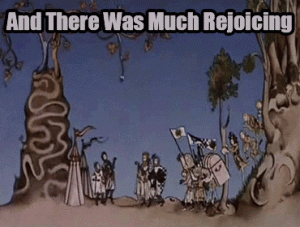Tomorrow, Aug. 9, marks the ten-year anniversary of the formation of Hurricane Charley. The third named storm of the 2004 hurricane season, Charley did $13 billion of damage, nearly all of it in Florida.
But the bad news for the Sunshine State didn’t end there. Charley was followed three weeks later by Frances, a $12 billion storm that wrought havoc across Central Florida. Then September brought both Ivan, an $18 billion storm that struck Pennsacola, and Jeanne, a $6.8 billion storm that, like Frances, made landfall near Port St. Lucie.
The following year, Pennsacola was hit again, this time by Hurricanes Dennis, which caused $4 billion in damage. Then, the capper to this 15 months of misery in the Sunshine State came in the form of October 2005’s Hurricane Wilma, the strongest Atlantic hurricane ever recorded, which did $29.1 billion of damage.
Here we are, a decade later, and just last month, Florida’s Office of Insurance Regulation announced that the Florida Hurricane Catastrophe Fund would finally end a 1.3 percent assessment that has been imposed on nearly every property insurance policy to pay for borrowing the Cat Fund incurred in the wake of the 2004 and 2005 storm seasons. OIR noted the charge will be ended 18 months earlier than originally expected, and there was much rejoicing.
And justifiably so. The assessments had been a burden on Floridians since 2007, when they were first initiated at a level of 1 percent. Through May 31, the fund had raised a total of $2.9 billion through these post-storm “hurricane taxes” just to cover shortfalls from those two record storm years.
Alas, Florida still isn’t quite done paying the bill. While the Cat Fund’s charges will go away entirely for new policies taken out with the state-run reinsurer, multi-year policies issued or renewed between Jan. 1, 2011 and Dec. 31, 2014 will still see a 1.3 percent assessment, and those issued or renewed between Jan. 1, 2007 and Dec. 31, 2010 will still pay a 1 percent assessment.
Even more crucially, the state-run primary insurer, Citizens Property Insurance Corp., also continues to levy its own hurricane taxes tied to the 2004 and 2005 seasons, and is projected to continue the assessments until 2017. Citizens thus far has collected $1.5 billion in assessments to finance its post-2004/2005 borrowing. It continues to collect $162 million a year, 84 percent of it from non-Citizens policyholders.
Citizens has made great strides in reforming its operations, both in shrinking its book of business and in investing in risk transfers that now include $3.1 billion of private reinsurance. But the state-run entity remains the largest residential property insurer in Florida, with 14.5 percent of the overall homeowners/farmowners market in 2013, according to SNL Financial. And with $292.6 billion in total exposure, it is a matter of when, not if, Citizens will have to dig itself out of another fiscal hole, the moment Florida’s now nine-year-long streak of good fortune ends.
It’s good news that both Citizens and the Cat Fund are in better fiscal shape than they’ve been in years, but much more work needs to be done. In the short term, Florida needs to take advantage of the remarkably good terms that can be had in the current soft market to shift as much risk to the private global reinsurance market as possible. In the longer term, we need market reforms that will encourage primary insurers to return to the Sunshine State by giving them the freedom to charge appropriate rates.
Don’t let the lessons of 2004 and 2005 be forgotten. Florida can’t afford another decade of hurricane taxes.
Was this article valuable?
Here are more articles you may enjoy.




 North Carolina Adjuster and Son Charged With Embezzlement in Roof Jobs
North Carolina Adjuster and Son Charged With Embezzlement in Roof Jobs  Former MLB Player, 3 Others Charged with Staging Auto Accident in Miami
Former MLB Player, 3 Others Charged with Staging Auto Accident in Miami  AIG Sues Newly Launched Dellwood Insurance and Its Founders
AIG Sues Newly Launched Dellwood Insurance and Its Founders  Vintage Ferrari Owners’ Favorite Mechanic Charged With Theft, Fraud
Vintage Ferrari Owners’ Favorite Mechanic Charged With Theft, Fraud 

